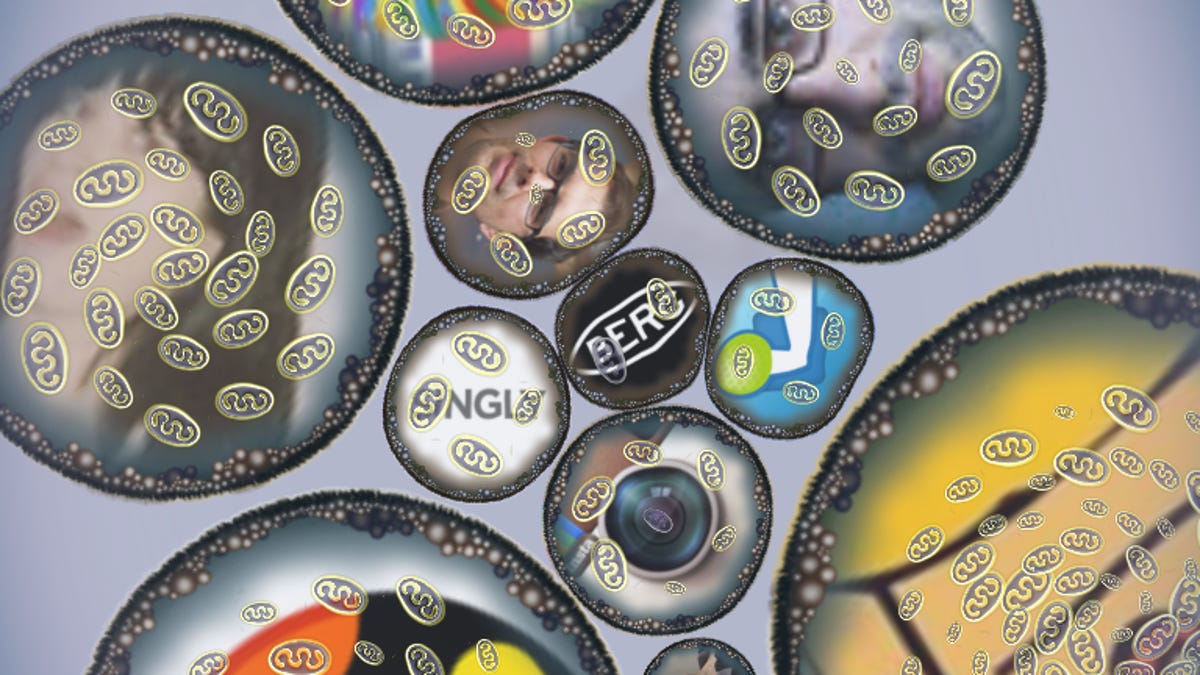Twitter and Facebook bloom on iPad with Biologic
New iPad app offers an innovative way of visualizing users' social media feeds based on a biological metaphor. Bigger cells means more vital information.

There's a lot of ways to visualize your Twitter and Facebook feeds, but no one's ever gone down to the cellular level to do so.
Until now, that is. This morning, San Francisco startup Bloom released its latest
Last year, Bloom--which was funded by Betaworks, SV Angel, and Flickr co-founder Stewart Butterfield, and which was founded by veterans of Stamen Design and frogdesign--released its first app, Planetary. That app brought a galactic approach to users' music libraries. Now, with Biologic, Bloom is turning once again to science to bring new styles of data visualization to every day tools, in this case Twitter, Facebook, and LinkedIn.
The idea, at its basic form, is a metaphor based on the way biological cells communicate. When users launch the app, they'll see a screen filled with colorful, cartoonish bubbles--the cells--with one each representing their Twitter, Facebook, and LinkedIn feeds. Tapping with a single finger on, say, the Twitter cell, they'll then zoom in and see a bunch of bubbles, with the largest ones representing the most prolific sources. New sources appear on the outside and push their way in as others come along.
Inside each cell, users will see one or more "particles," each of which represents a different type of "activity," be it a photo, a video, a URL, or simple text. By tapping on an individual particle, users can read the actual piece of content.
The larger the particle, the more recent it is, and if that piece of content has been passed on--retweeted, say--it will wiggle. The idea, then, is that at a glance, users can see, and instantly intuit, the value of any piece of information.
And for Bloom, building apps that give users that instant feedback through visualization is the company's main value proposition.
Planetary "was meant to demonstrate the power of our thesis, and was meant to speak to the possibilities of a different kind of computing, the immersive and fluid experiences around data," Bloom President Ben Cerveny told CNET. "Once we were able to bring that into the world, it was like, everyone understands the power, now let's go back and figure out how to deliver again and again. It's about countless apps that deliver that approach."
With Biologic, Bloom is aiming to build on what it created with Planetary, and set the stage for the next apps in its evolution. At the same time, while Biologic will start simple, it will eventually provide its unique visual approach to information flowing in from other networks, like Flickr, and perhaps a wide potential variety of information delivered by outside developers.
"What we're doing is akin to great new board game designers," said Cerveny, "like [the developers] who built Settlers of Catan. It's a framework for a simple rule set. You play, and you understand. Then, once you understand, you can add on modules."
That means that over time, as users learn and become comfortable with Bloom's visual metaphors for creating playful ways of interacting with data, the company will offer new tools that let users see different kinds of connection in data. "We'll help you understand more about what's happening around you," Cerveny said, "in your social group, and in the media you care about."
That's also how Bloom is likely to make money off Biologic and its other apps. The basic tools will be free to download, and the company could offer add-ons at a price, though Cerveny didn't mention anything specific that could be coming down the line.
Nature is 'messy'
With its founders backgrounds at leading design agencies like Stamen and frogdesign, it's no wonder that Bloom is trying to bring order to very disordered environments. As Cerveny put it, "The reality of nature is actually quite messy...[and] social networks are messy."
And that's where the company's software comes into play: making quick sense of messy systems through visualizations that users can understand right away. At first glance, Biologic seems chaotic and a bit comical. But once a user groks the system, it all falls into place. And it has the appeal of a fun science experiment. "This is the perfect medium for this type of simulation," Cerveny said. "It's literally visceral. You want to touch it, squish it around, and that draws you in instantly."
For now, Biologic offers pretty basic features. But over time Bloom plans to add to the fundamental toolset. Among those in the pipeline, Cerveny explained, are the ability to search for keywords--such as hashtags. The results will appear as small cells that pop out from the bubbling mass. "Multiple hashtags could collide and form together," he said, "and make a long chain if there's a lot of tweets with the same hashtag."
Of course, if someone were to search for, say, the #SXSW hashtag during South by Southwest this week, the visuals might get a little crazy. But Cerveny said that's the point. "It might be going by so fast that you can't see it," he said. "But you can see the dynamics. We're interested in that dynamism."

